|
Sunday dawned with
a fair bit of sun. On Saturday, it had rained all day while I
was looking around on the north shore for an King Eider. I had
run into Carlo that day, and he said that he had found a Bar-tailed
Godwit right at the base of Blackie Spit. So my first destination
on Sunday was Blackie.
The bird gods must
have been happy with the homage I had been paying, for the Bar-tailed
Godwit was right where Carlo had left him, Godwits are fair-sized
shorebirds with a long, pink-and-black, upcurved bill. The Bar-tailed
was hanging out with a Marbled Godwit, and with the good sun and
a high tide bringing them in close, I got a few good photos of
them. In this one, the Marbled is on the left, and the Bar-tailed
on the right.
|
|
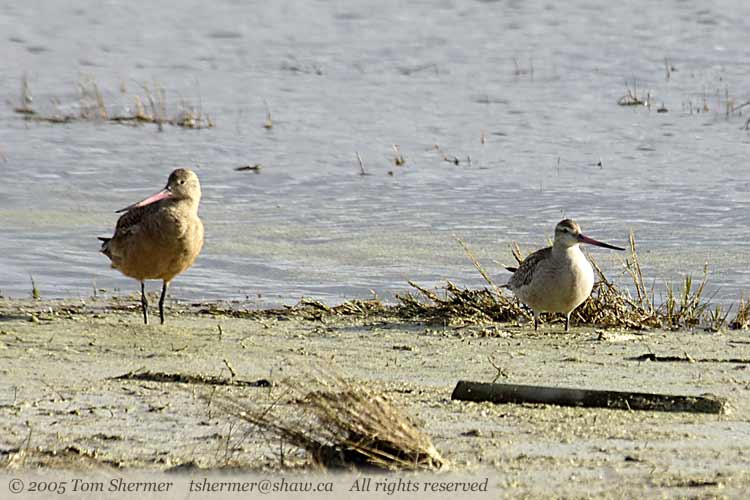 |
| I chatted
some with a group of older women who were out birding, pointing
out these birds and showing them the different godwits in my guide
book. It was a great morning to be out. After the women moved on
towards the tip of the spit, I got a few shots of just the Bar-tailed.
This was a juvenile bird, and I'm told that it was a bit late in
the season for him to be in these parts. |
|
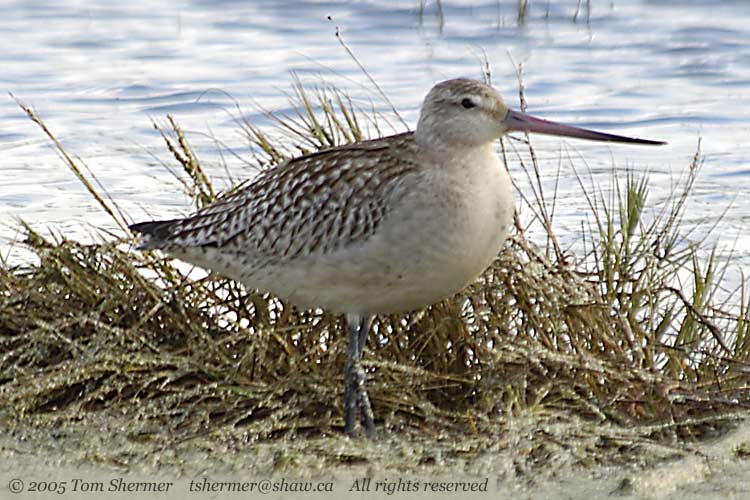 |
|
I wouldn't know that
from experience; though, as that was the first certain Bar-tailed
that I've ever seen. Soon after this photo, he and the other godwit
flew off across the bay.
I then took a few photos
of the other birds that were hanging around. The following photo
shows two female Northern Pintails, which I think are very pretty
ducks. I really like the gold tones on their heads. The thing
that makes this photo work for me, though, is the appearance of
the water. It's almost like it was liquid silver or mercury.
|
|
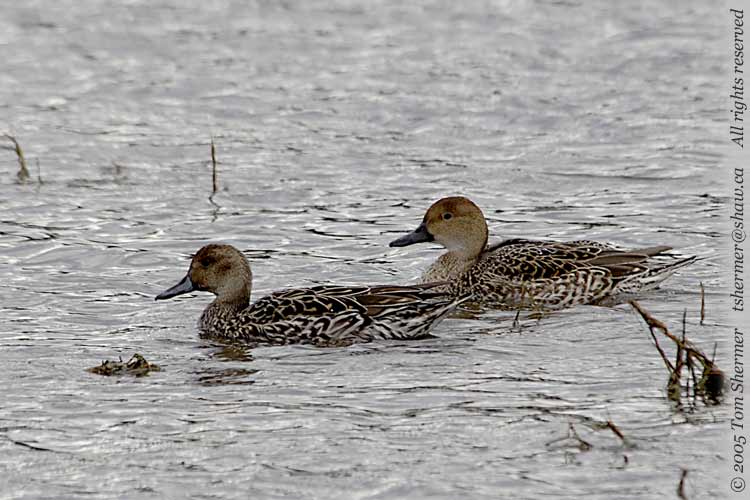 |
|
It wasn't though, which
is a good thing, because I don't think that silver or mercury
would have been a very healthy thing for the ducks to be floating
in. Not to mention the poor fish below.
But that's one of the
neat things (and challenges) about doing photos with water in
them—you can catch water in so many different moods and colors.
There were a few small
shorebirds running around. As far as I could tell, they were all
Dunlin, like this fellow.
|
|
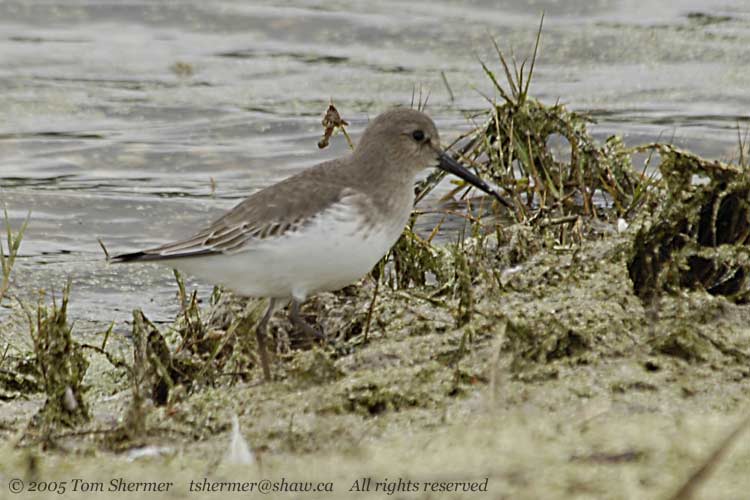 |
| Here's a
different Dunlin from a little while later, with a few grains of
sand stuck to his bill. |
|
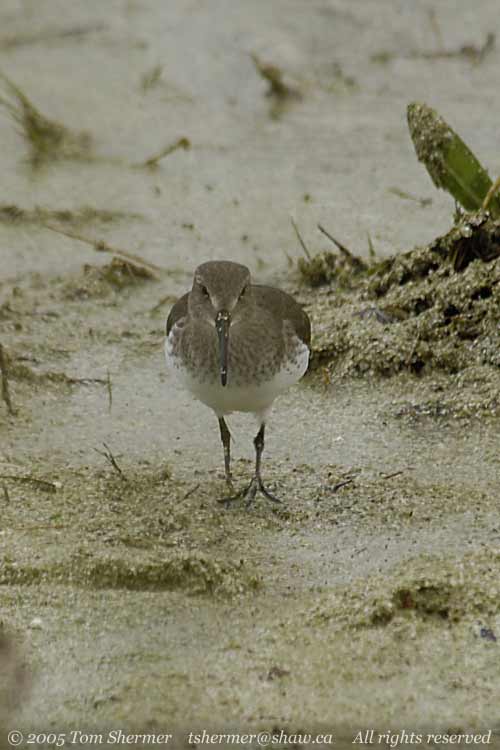 |
| There were
also a few Short-billed Dowitchers on the spit. They were all adults
in their winter (nonbreeding) plumage, like this one. His bill is
at least half buried in the sand, and the part above ground has
a lot of sand stuck to it, so it almost looks as if he has no bill.
Rest assured, though, this fellow has a straight bill that's longer
than the Dunlin's. |
|
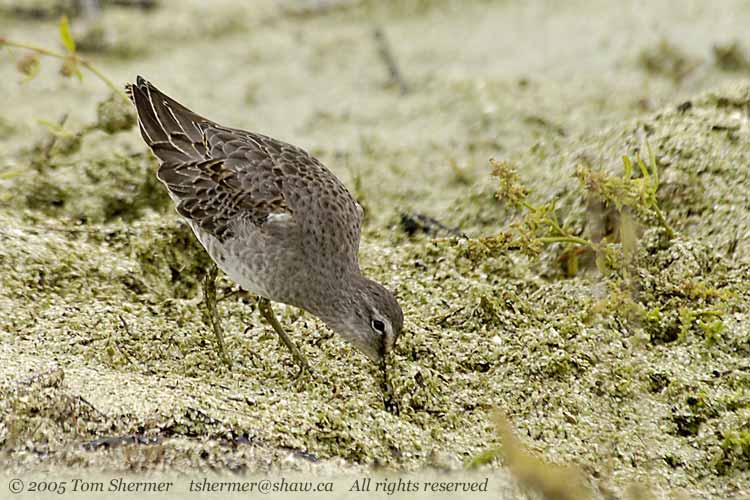 |
| There wasn't
much else happening on the spit proper, so I ventured off of it
to other parts of the park. The only subject I found was a flock
of about a dozen Bushtits moving through a stand of some tall plants.
Here's one of the little beauties. |
|
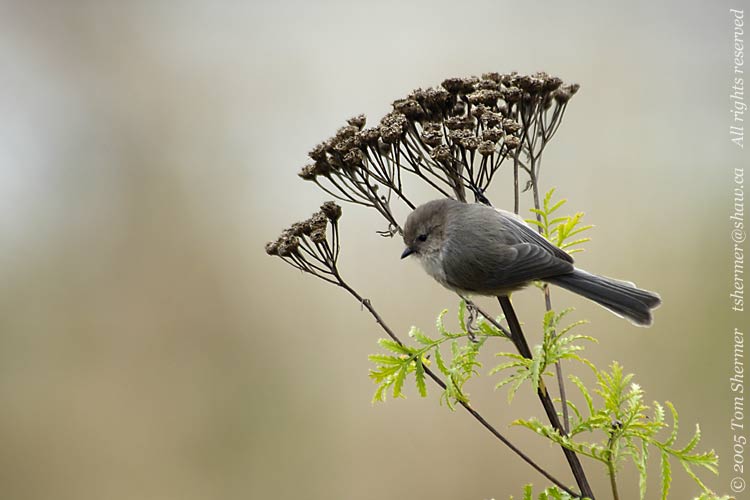 |
|
They may be beautiful,
but they sure weren't fooling around. In fact, I think I must've
found a Bushtit boot camp, where unruly young birds are taught
how to behave like a true Bushtit should. As I watched, a group
of them were ordered to fly across a stand of plants. The last
one to make it across was penalized by having to do 15 chin-ups
while a drill sergeant glared at him.
|
|
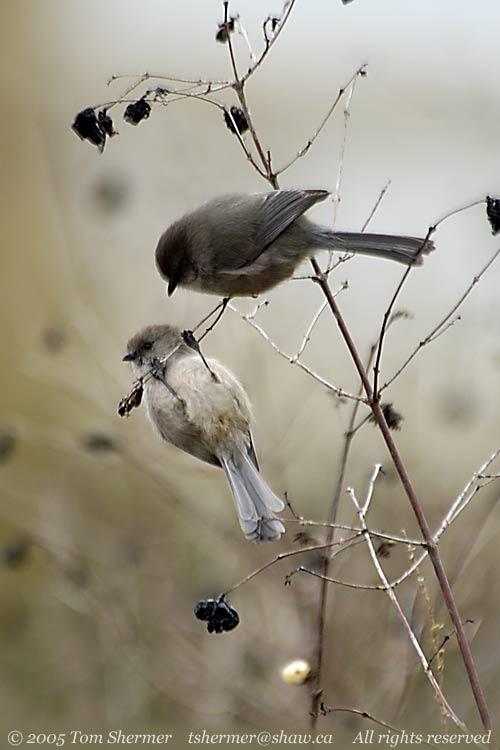 |
| And then
another one was ordered to balance a grain on his bill while hanging
upside down for ten minutes, just for chirping out of turn. That'll
teach him to keep his bill closed. |
|
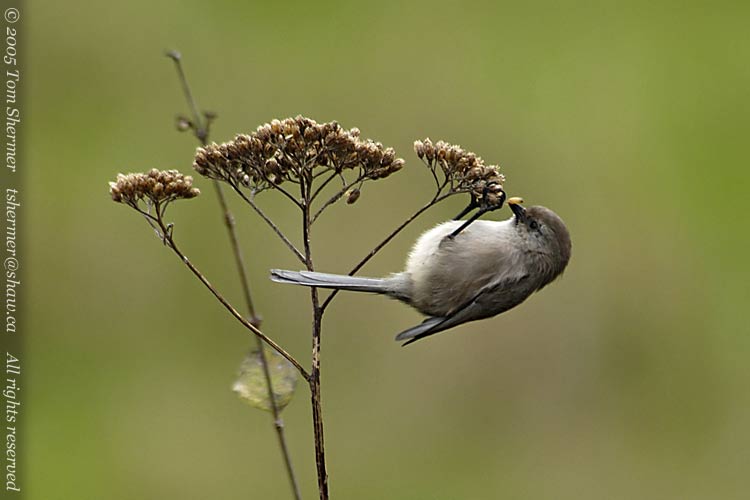 |
|
Those Bushtits sure
can be hard on one another.
Well, boot camp was
fascinating, but I decided to move on and rekindle my search for
the Eider. I got in my car and drove north for 30 minutes to Kitsilano
Beach, the place where the bird had last been seen. There was
no eider at Kitsilano, and there weren't even any flocks of Surf
Scoters. There was one scoter about, though—a female White-winged
Scoter.
|
|
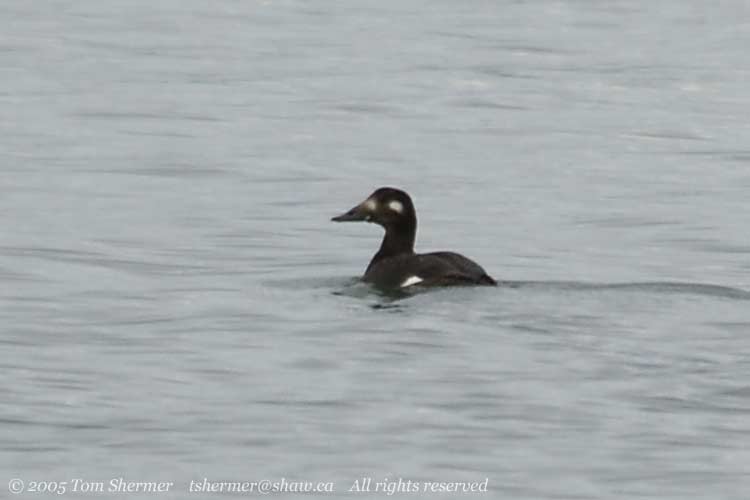 |
| She was
pretty far out on the water, though. Even further out, I saw a cormorant
catch a fish. Judging by the bill and head shape, I think that this
was a Pelagic Cormorant. |
|
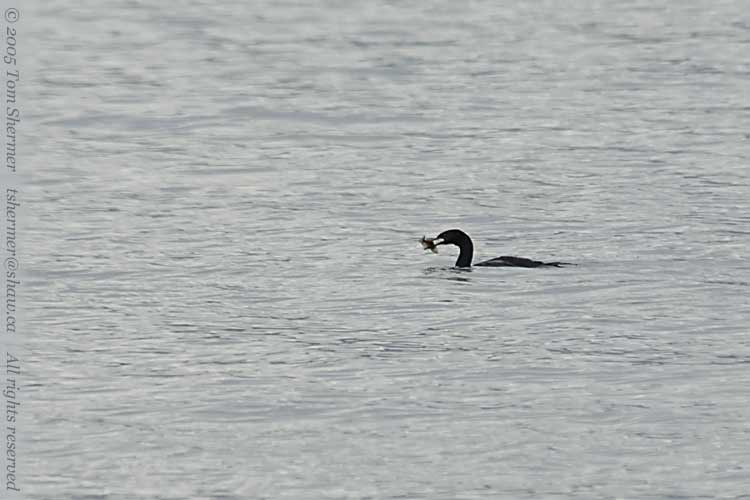 |
| Closer in,
I found a Horned Grebe paddling around. |
|
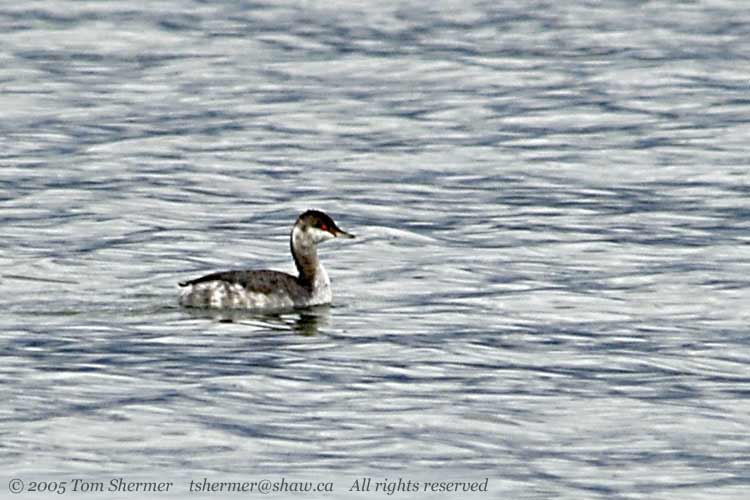 |
| But that
was it for Kits, and I decided to head on over to Stanley Park.
I parked near the Second Beach swimming pool, and as I walked by
I saw a number of Ring-billed Gulls standing on the edge of the
(empty) pool. |
|
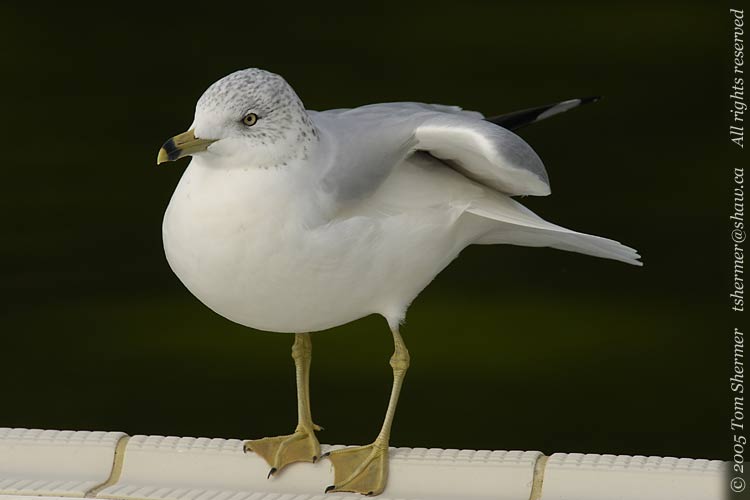 |
| Once I was
down at the seawall, I found a few dabbling ducks in the water,
like this American Wigeon. Note the completely different silky-blue
water in this shot. |
|
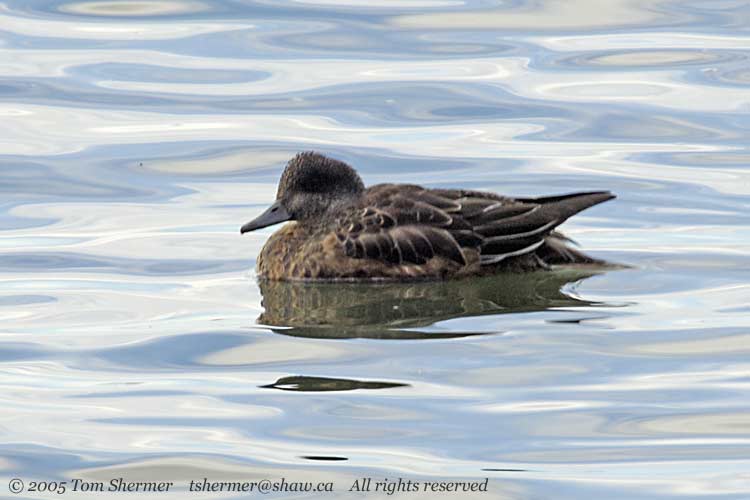 |
| And on this
shot of another Horned Grebe, I got the same blue colors in the
water, but with a lot more shade. |
|
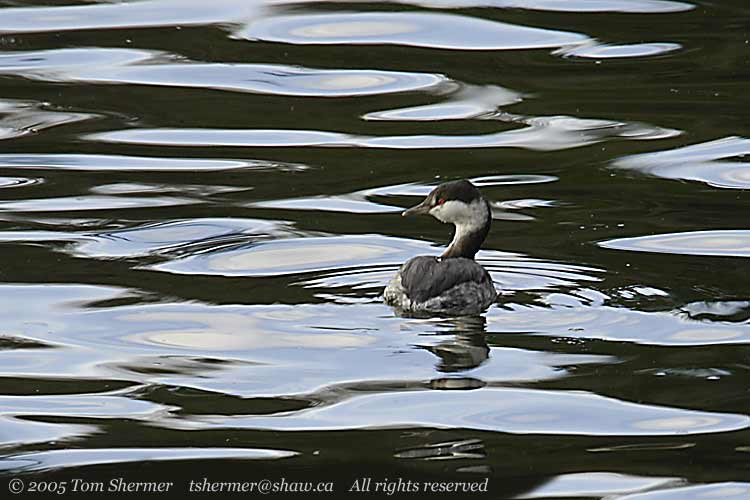 |
|
A little ways along
the seawall, there was a small lookout with some benches. At this
lookout were a few people with cameras, and as I approached I
heard first and then saw a few Black Oystercatchers on the rocks
below.
Oystercatchers are
pretty cool, and one can catch them in quite different looks.
For instance, this fellow is giving me a mean, don't-mess-with-me
stare.
|
|
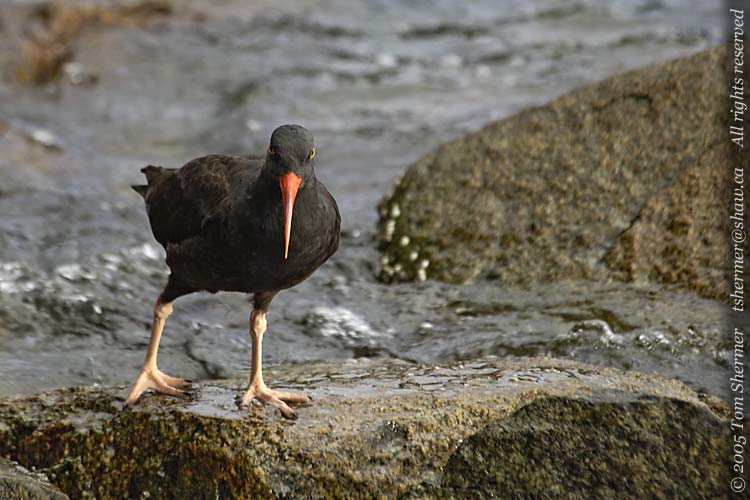 |
| While his
friend afforded a more comical side view. |
|
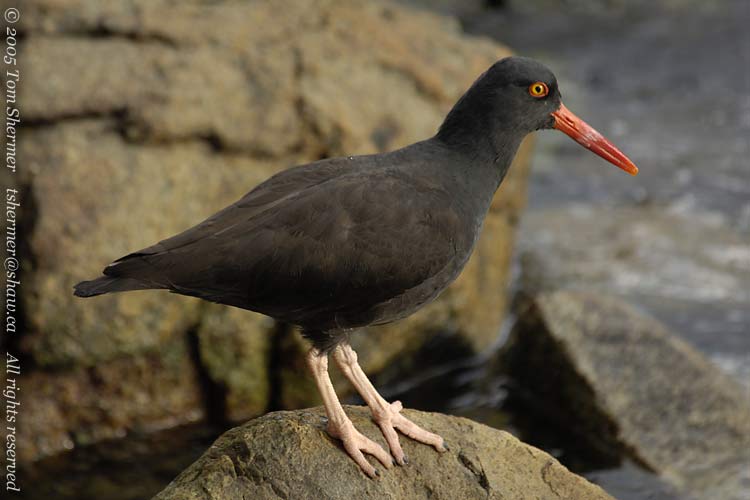 |
| I turned
around at the lookout, because I didn't find any flocks of scoters.
I thought about heading on to the north shore, but got distracted
by some Canada Geese across the road. I took a few shots of the
geese, and in following them, happened upon a small stream that
held a pair of Mute Swans. Here's one of the swans. |
|
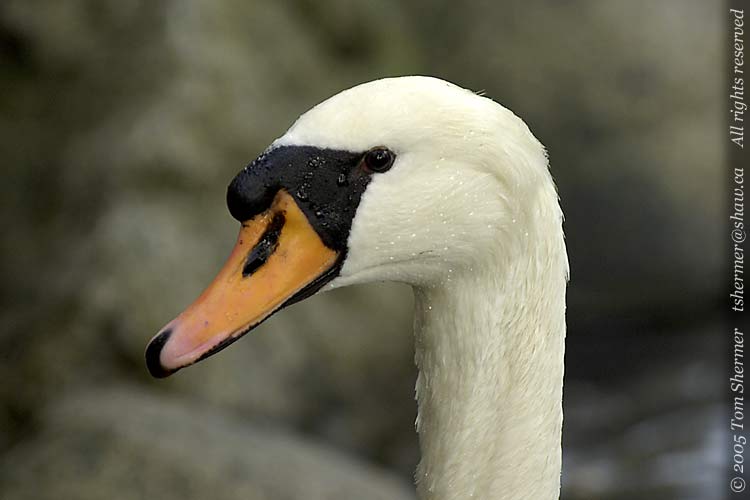 |
| I knew that
there were a few Mute Swans in the park, as they are known as a
popular feature there. Folks even bring their kids to the park to
feed the the swans, along with the ducks and geese. |
|
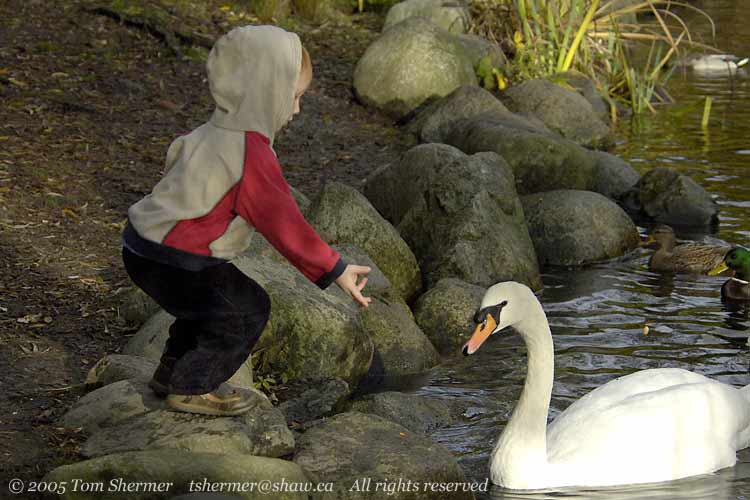 |
|
I ended my birding
for the day by standing near First Beach watching a huge flock
of Surf Scoters fly by, going from the north shore over to the
Kitsilano area. I later learned that the King Eider had been spotted
somewhere amongst that flock, by my friend Ilya, who was up on
the north shore at the same time. I'd have to save the eider for
another day.
Glad to not be a Bushtit,
Tom
|
|